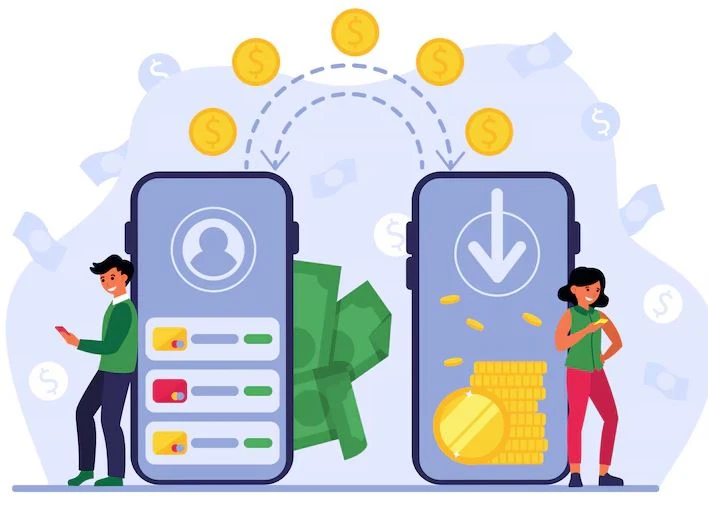Table of Content
Which Factors Can Scale up Fintech App Development Cost?
Fintech apps have transformed the way individuals and businesses manage money. They offer services ranging from digital banking and investment tracking to peer-to-peer payments and cryptocurrency trading. These apps provide convenience, speed, and often lower costs compared to traditional financial services. As more consumers demand mobile-first solutions, fintech has become a booming industry, driving innovation and reshaping global finance.
The development of a fintech app involves a combination of advanced technology, stringent security protocols, and regulatory compliance. That is why it is always recommended to take professional app development services that can take on such technical challenges. Additionally, fintech apps often require legal and financial expertise during development to ensure they meet compliance standards like GDPR, PCI DSS, or regional banking regulations.
The cost to develop a fintech app can vary widely depending on its complexity, features, design, and target platforms. Despite the high initial costs, successful fintech apps often generate significant returns due to their scalability and broad market potential. If you want to learn more about Fintech app development cost, read this blog in detail. It will list down several factors that could influence the budget of this project with a reasonable understanding.
What is a Fintech App?

A fintech app is a software application that uses technology to deliver financial services in a more efficient, user-friendly, and accessible way. These apps operate on smartphones, tablets, or web platforms and are designed to streamline a wide range of financial activities, such as budgeting, investing, borrowing, saving, or transferring money. By combining finance and technology, fintech apps provide users with tools that simplify tasks traditionally handled by banks or financial institutions.
Fintech apps come in many forms, including mobile banking apps, digital wallets, peer-to-peer lending platforms, and apps for buying and selling cryptocurrencies. Some are aimed at consumers, while others serve businesses by offering services like invoicing, payroll, and expense tracking. The key feature across all fintech apps is the emphasis on real-time access, automation, and enhanced user experience through intuitive interfaces and personalized features.
What sets fintech apps apart from traditional financial services is their ability to leverage cutting-edge technologies such as artificial intelligence, blockchain, data analytics, and open APIs. These innovations allow for faster transactions, smarter decision-making, and increased financial inclusion by reaching users who may not have access to conventional banking. As a result, fintech apps are playing a central role in reshaping the global financial landscape.
Fintech App Development Cost: Factors to Consider

There are some key factors that could influence the cost of fintech app development. It is wise to remember these points before starting development, as that allows you to prepare the development budget efficiently. Let’s take a look at them below.
Application Platform
Cross-platform development refers to creating apps that can run on multiple operating systems—such as iOS and Android. In finance app development, this approach can significantly reduce costs compared to building separate native apps for each platform. By using frameworks like React Native, Flutter, or Xamarin, developers can write code once and deploy it across platforms, which minimizes development time, reduces the need for large teams, and streamlines the testing and maintenance processes.
However, while cross-platform development offers upfront savings, it can also introduce hidden costs if the app requires platform-specific features. Fintech apps often involve complex integrations with banking systems, high data security demands, and compliance with financial regulations. Still, for many fintech startups and mid-size firms, the cost-efficiency and faster time-to-market offered by cross-platform tools make them a compelling choice.
Complex Features
Complex features significantly increase the cost of fintech app development due to the advanced technology. Features such as real-time transaction tracking, AI-powered financial analytics, biometric authentication, and blockchain integration demand extensive backend infrastructure, sophisticated algorithms, and rigorous testing. Each of these components involves detailed planning, skilled development, and often custom-built solutions, which drive up both time and cost.
Additionally, implementing complex features requires heightened attention to security, compliance, and scalability. These advanced functionalities also require ongoing updates, monitoring, and maintenance to ensure performance and user trust, all of which contribute to higher long-term development costs.
Development Team
The composition and location of the development team play a major role in determining the overall cost of fintech app development. Hiring a highly experienced team with specialized knowledge in fintech, cybersecurity, and compliance will generally come at a premium. Developers with expertise in financial APIs, encryption protocols, and regulatory frameworks command higher rates. In contrast, outsourcing to skilled teams can reduce costs while still maintaining quality.
Beyond individual salaries, the structure of the team also affects the cost. A full fintech app development team typically includes project managers, front-end and back-end developers, UI/UX designers, QA testers, and legal or compliance consultants. The need for financial domain experts with legal advisors can further add to the expenses. Moreover, larger or more complex projects may require DevOps engineers,, increasing both the scale and the cost of development.
Third Party Integration
Third-party integration can significantly increase the cost of mobile app development due to the technical complexity. Fintech apps commonly rely on third-party APIs for essential functions. Integrating these services requires additional development effort to ensure smooth communication between systems, proper data handling, and security compliance, all of which add to the project timeline and budget.
Moreover, many third-party providers charge recurring fees based on usage, number of users, or transaction volume, which can increase operational costs over time. Developers also need to stay updated with changes in API versions or security protocols, requiring ongoing maintenance and potential code updates. In some cases, integration delays or limited API documentation can further complicate development, resulting in increased hours and higher costs.
Hosting and Domain
Hosting and domain fees can contribute significantly to the overall cost of fintech app development. Fintech apps require high-performance hosting solutions to handle sensitive financial data. This typically involves using cloud services such as AWS, Google Cloud, or Microsoft Azure, which offer advanced infrastructure but charge based on storage, bandwidth, computing power, and usage. For apps that need guaranteed uptime, data encryption, and global accessibility, the cost of premium hosting plans can quickly add up.
In addition to hosting, domain fees and associated services such as SSL certificates, DNS management, and cybersecurity protections also enhance costs. A fintech app must maintain a secure and trustworthy online presence, which often involves purchasing a reputable domain name. Depending on the domain’s popularity and the level of protection required, these expenses can be modest or substantial—especially when combined with the costs of ongoing monitoring and compliance with data protection standards.
Average Cost of Fintech App Development

A basic FinTech application with limited functionality and a simple user interface typically costs between $20,000 and $75,000 to develop. This price range usually covers essential features such as account registration, basic transaction capabilities, and standard security measures. Such applications are ideal for startups or companies looking to test a minimal viable product (MVP) in the market. The development process at this level often involves a smaller team which helps keep costs relatively low.
However, as the app’s functionality becomes more sophisticated, the overall development cost rises significantly. Incorporating advanced technologies such as artificial intelligence and real-time fraud detection demands a higher level of technical expertise and more extensive testing. These complexities not only raise the initial development cost but also increase ongoing expenses related to maintenance, updates, and compliance with evolving financial regulations.
Frequently Asked Questions
| What is a fintech application? A fintech application is a software platform that leverages technology to provide digital financial services. It simplifies and modernizes traditional finance through features such as automation, real-time access, and enhanced security. |
| Why fintech apps are becoming popular? Fintech apps are becoming popular because they offer convenient, fast, and accessible financial services anytime and anywhere. They also provide lower costs, personalized experiences, and innovative features that traditional banking often lacks. |
| How much does a fintech app cost? Developing a basic FinTech application with minimal features and a straightforward user interface generally ranges in cost from $20,000 to $75,000. |
Final Words
This wraps up our comprehensive overview of the various elements that can impact the cost of developing a FinTech application. Understanding these factors is essential for project managers, as it enables them to plan strategically and allocate resources wisely before initiating development.
It’s important to recognize that the cost of FinTech app development isn’t fixed, rather, it fluctuates based on the specific goals, features, and compliance requirements set by each client. As a result, budgeting for such a project should be approached with flexibility, allowing room for adjustments as the app evolves through different stages of development and refinement.

Empower your digital journey with StruqtIO - Your dedicated partner for cutting-edge custom software development, innovation, and digital transformative solutions. Harness the power of technology to elevate your business and redefine your digital landscape today.


